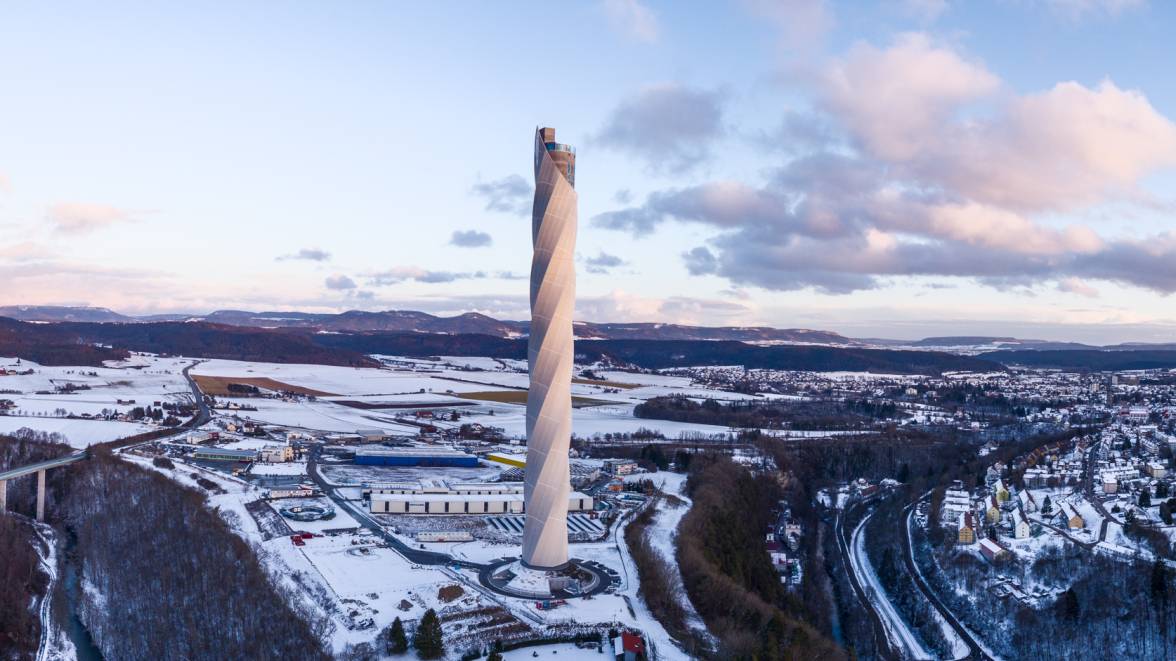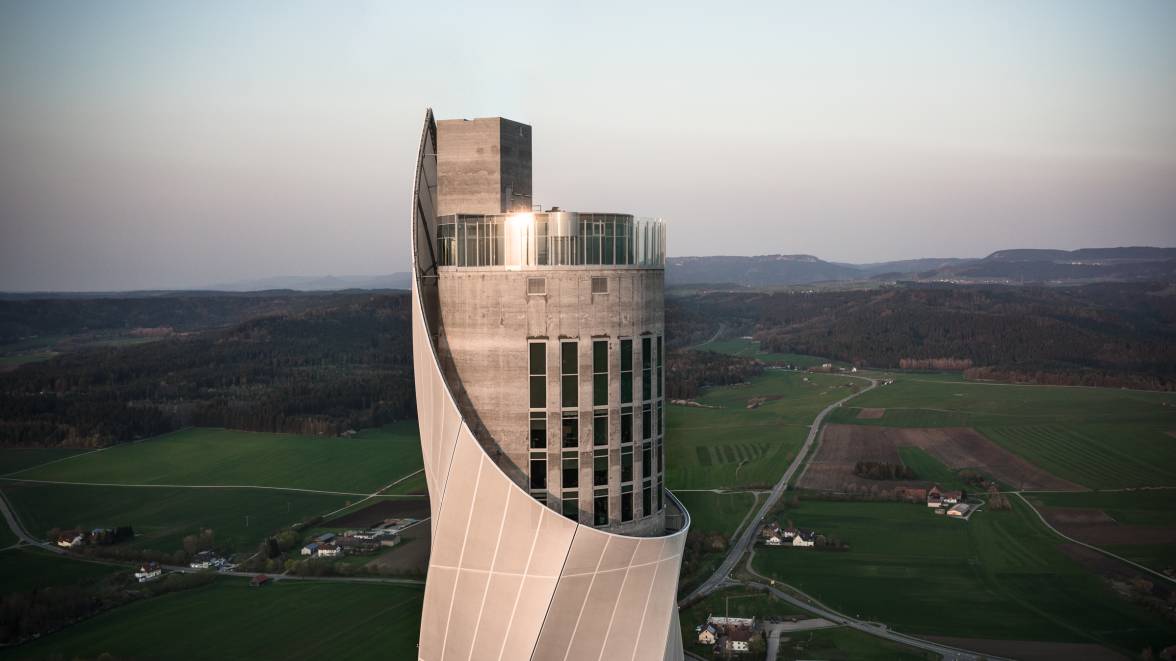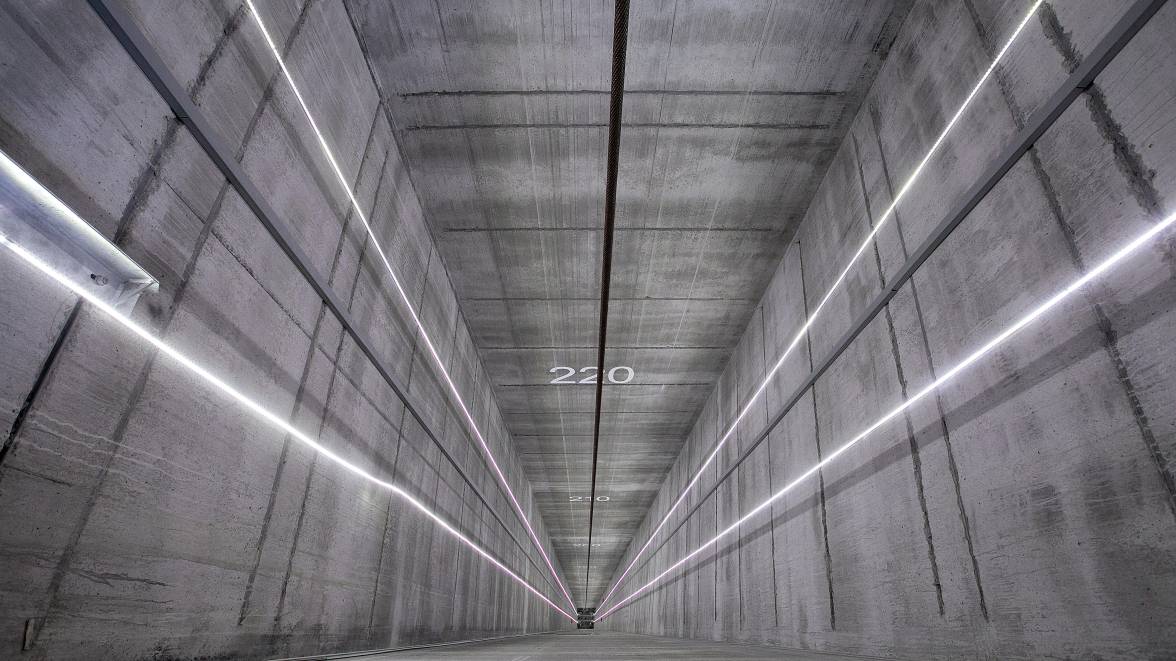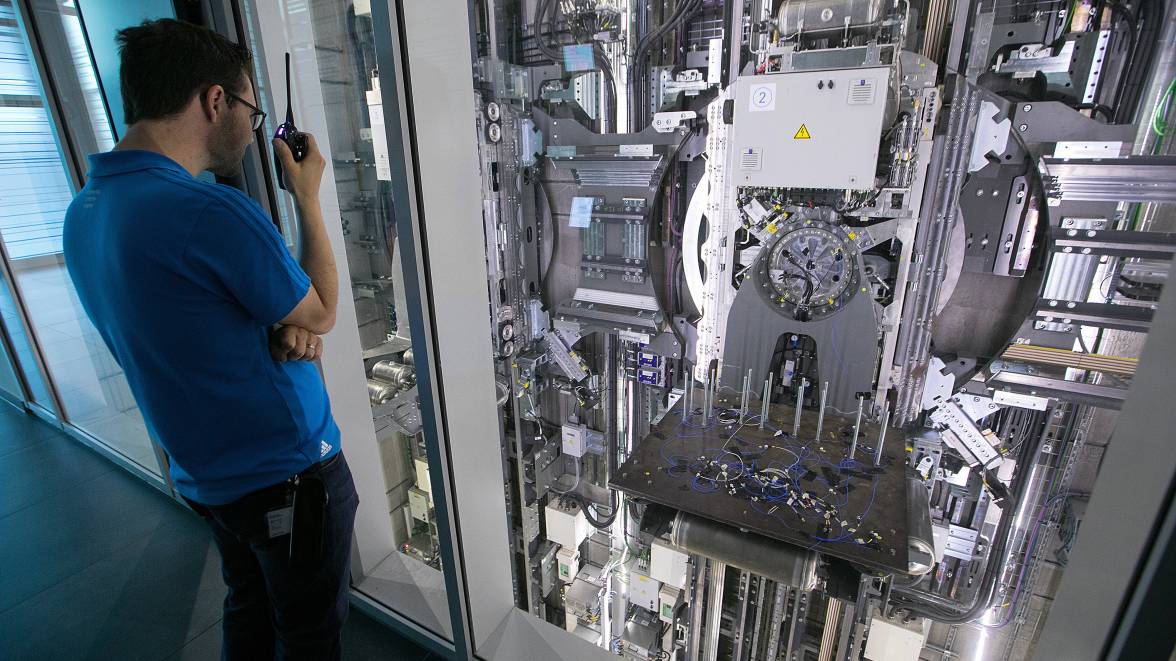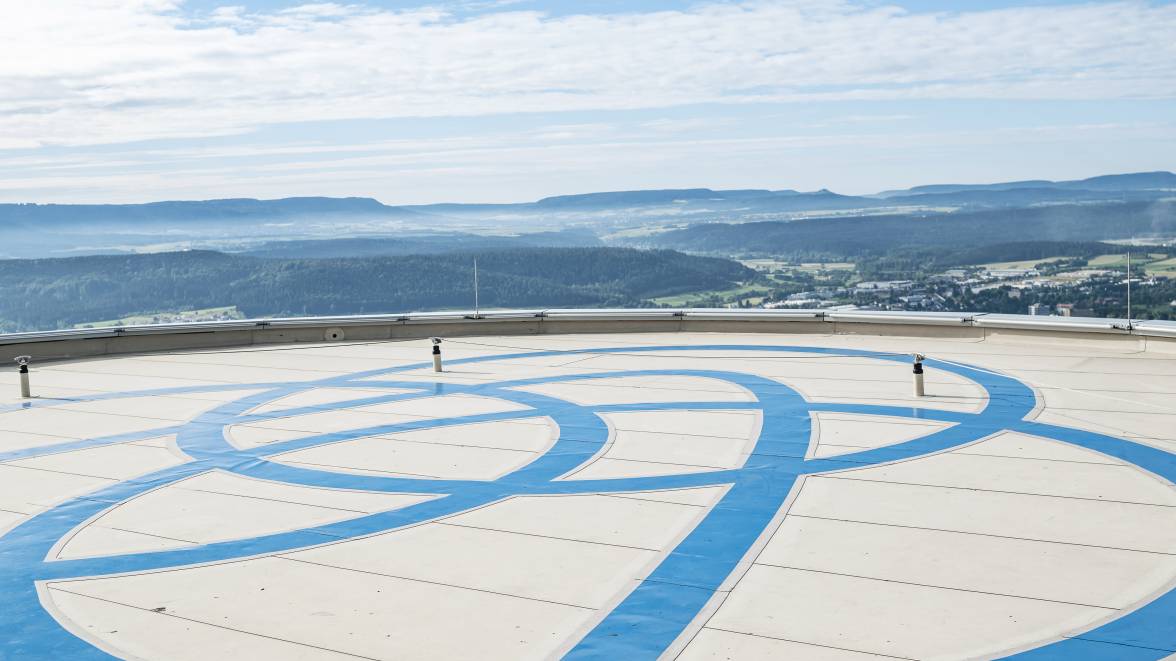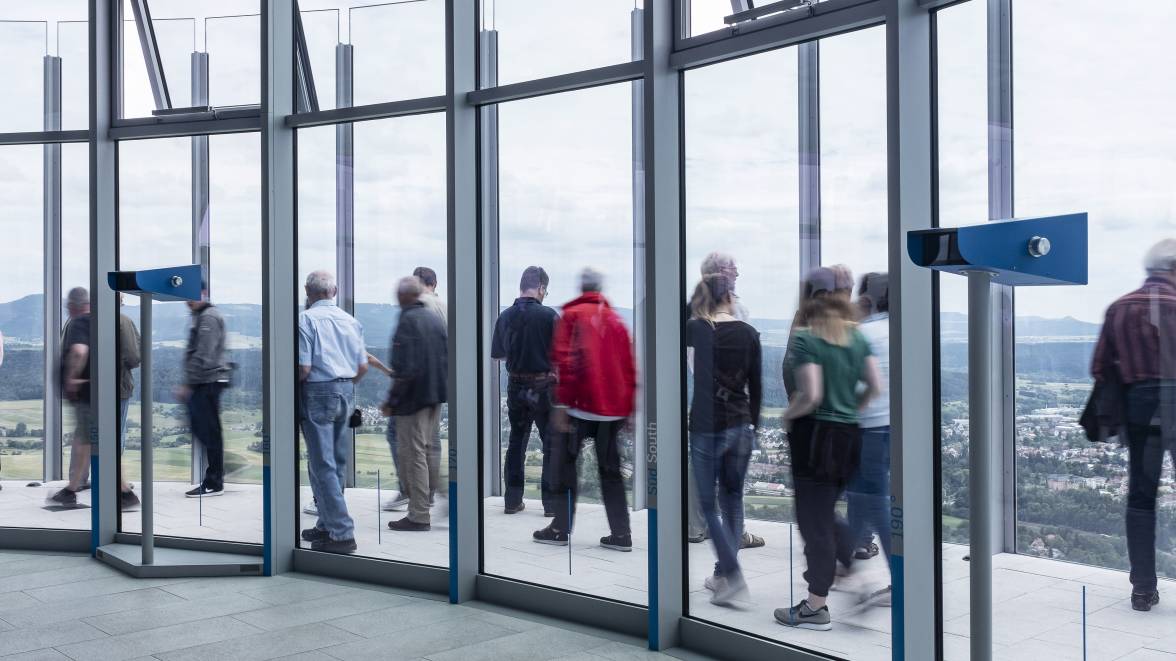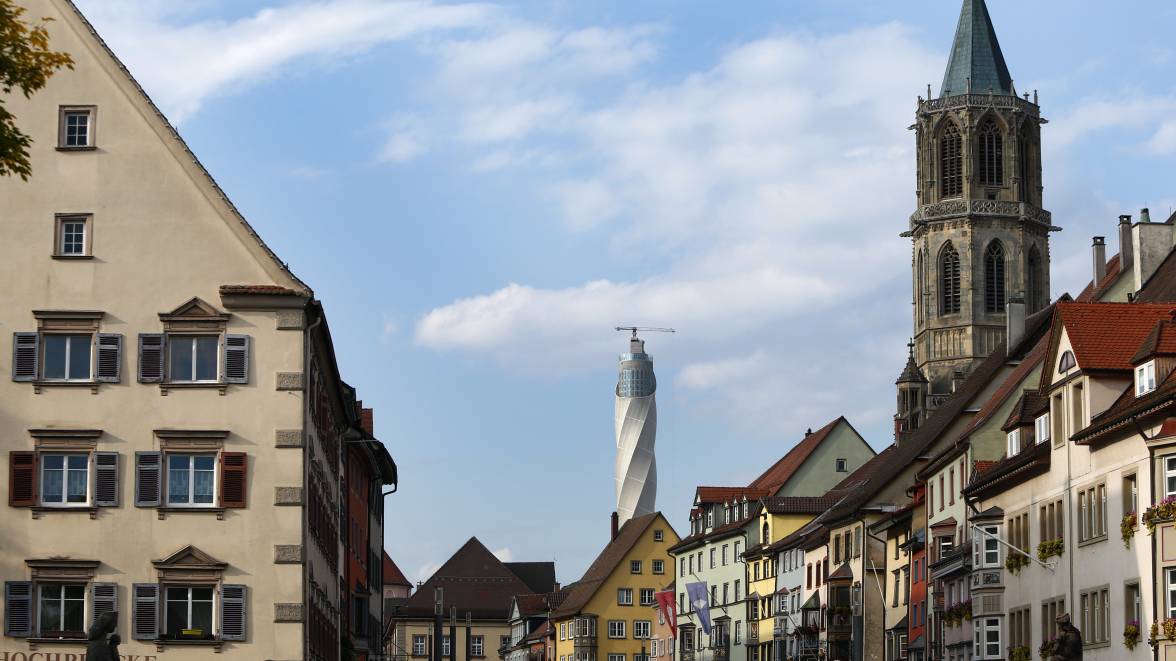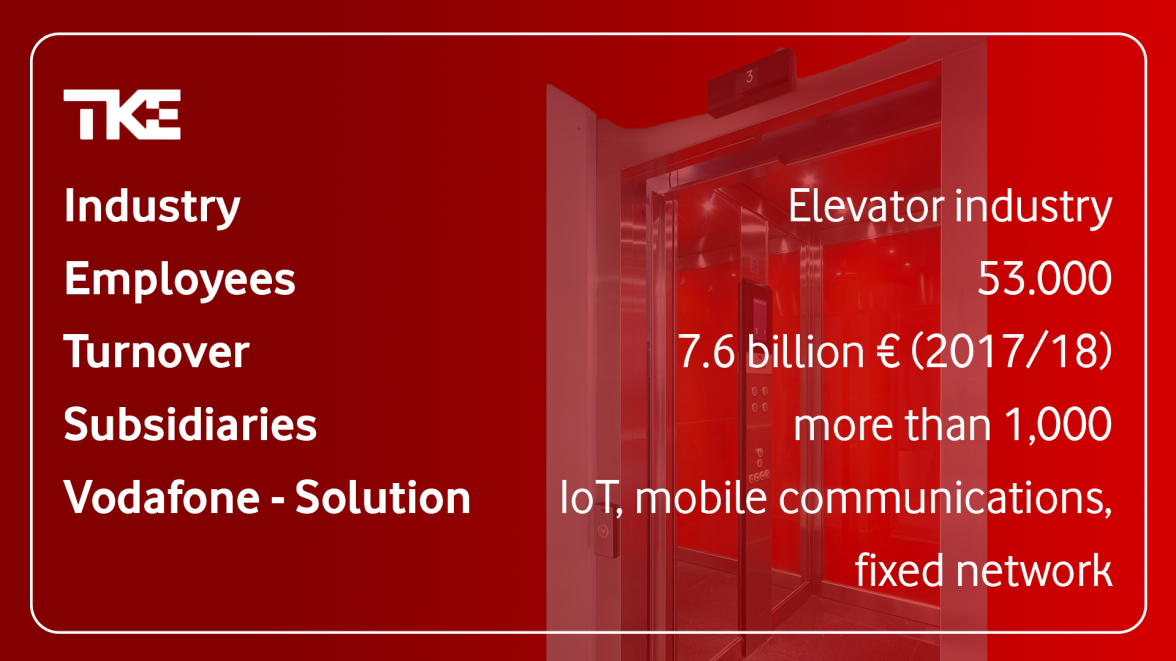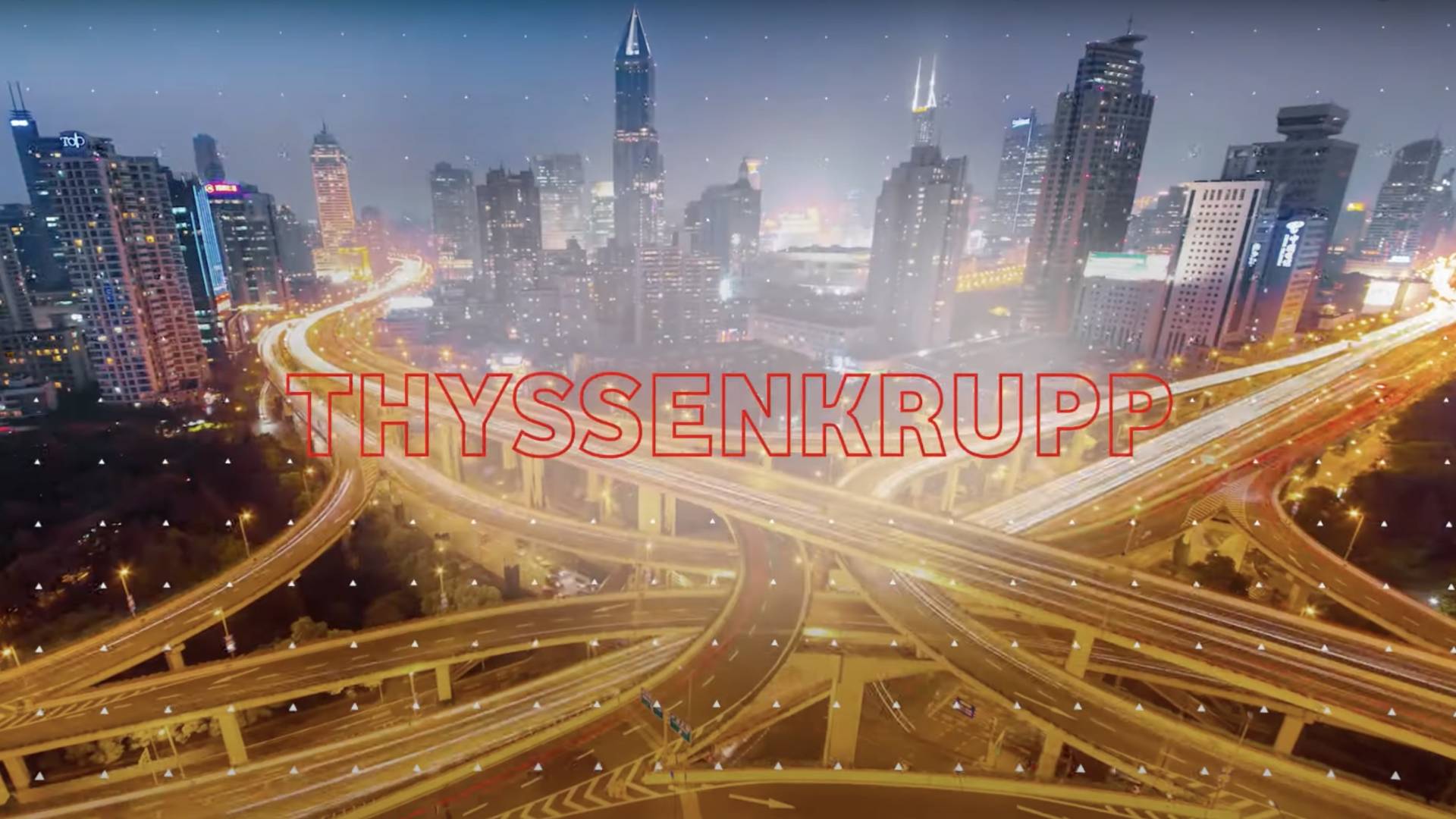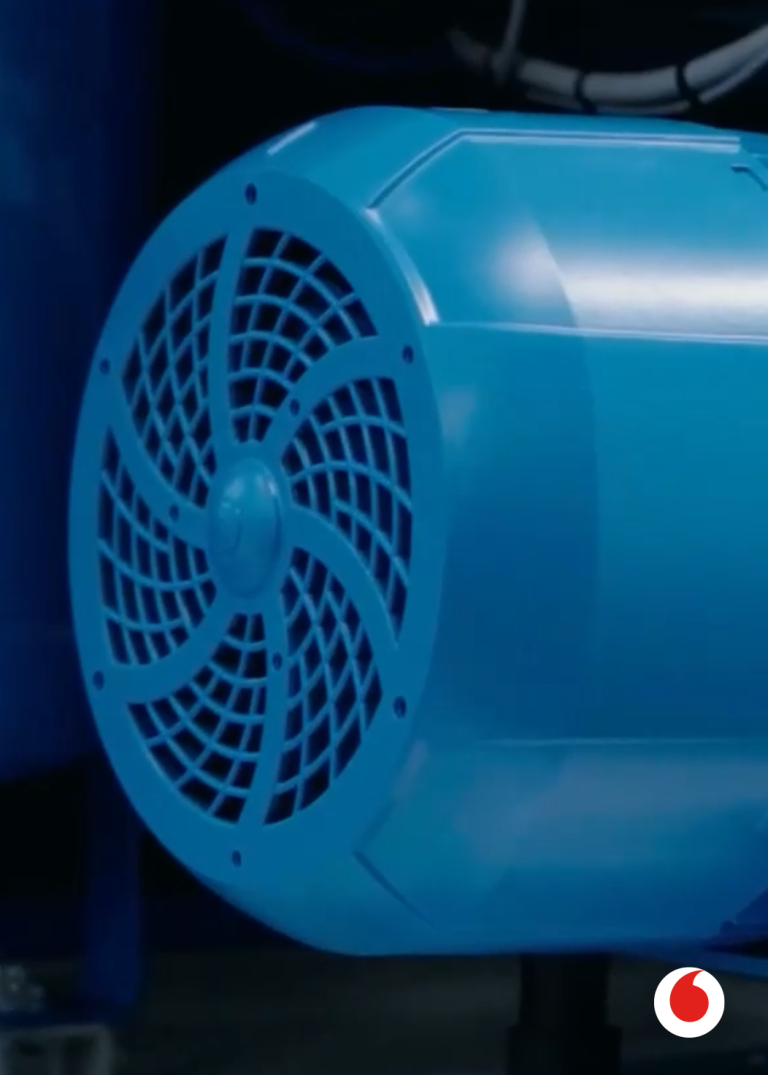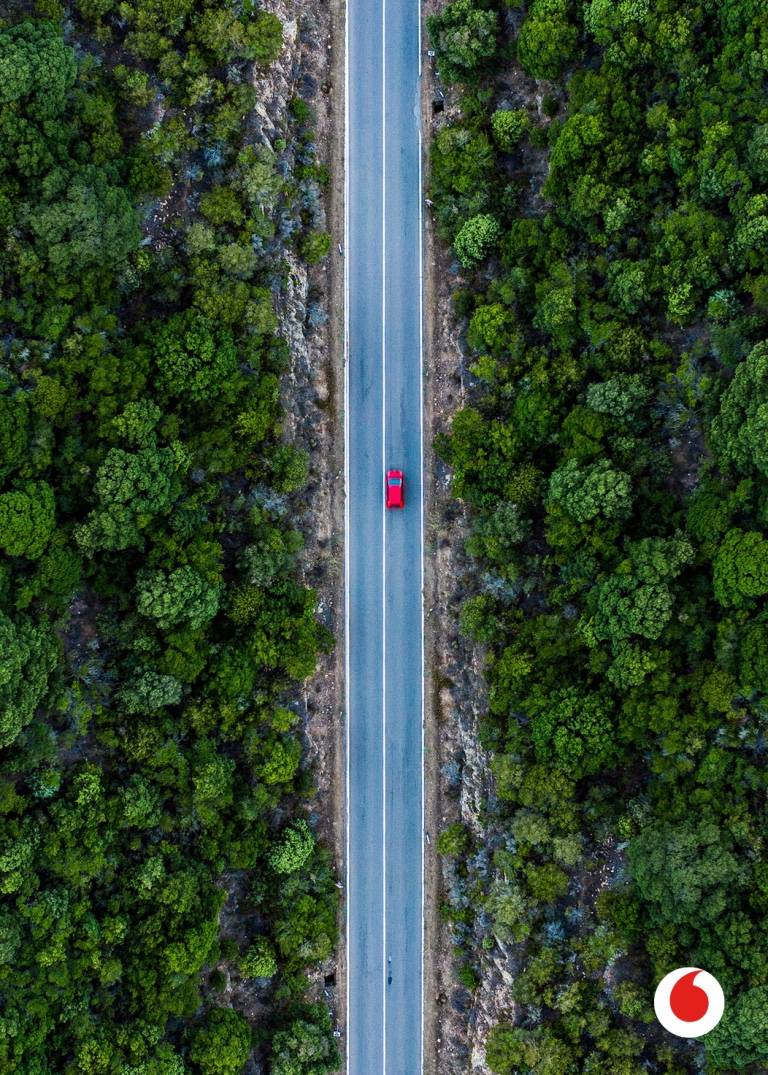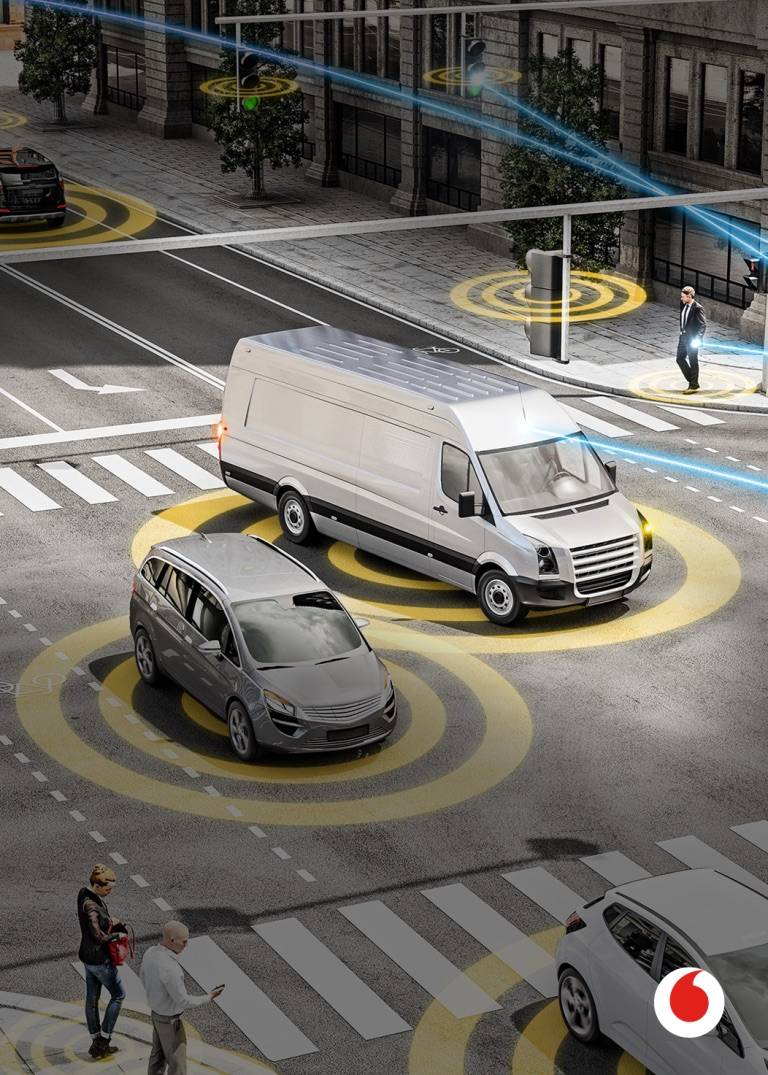To the top
Preventive maintenance through IoT
TKE reinvents the lift
TKE reinvents the lift
Preventive maintenance through the cloud and IoT
Lifts are the most widely used form of transport in the world - and the most prone to breakdowns. TK Elevator and Vodafone have developed a solution that drastically reduces downtime.


Average reduction in lift downtime thanks to predictive maintenance.
The Challenge
Revolutionary, record-breaking, maintenance-intensive
It is impossible to imagine our cities without lifts. Without them, there would be no high-rises, no skyscrapers - and therefore no skylines. Around the world, some twelve million lifts carry around one billion passengers every day. No other means of transport is used more frequently. But with a good 190 million hours of downtime per year, lifts are also particularly prone to breakdowns.
In 2021, there will be 780,000 lifts registered in Germany, with an annual increase of 10,000 units between 2017 and 2021. Lift maintenance is time-consuming and labour-intensive. The costs that companies have to invest in maintenance and repairs are correspondingly high.
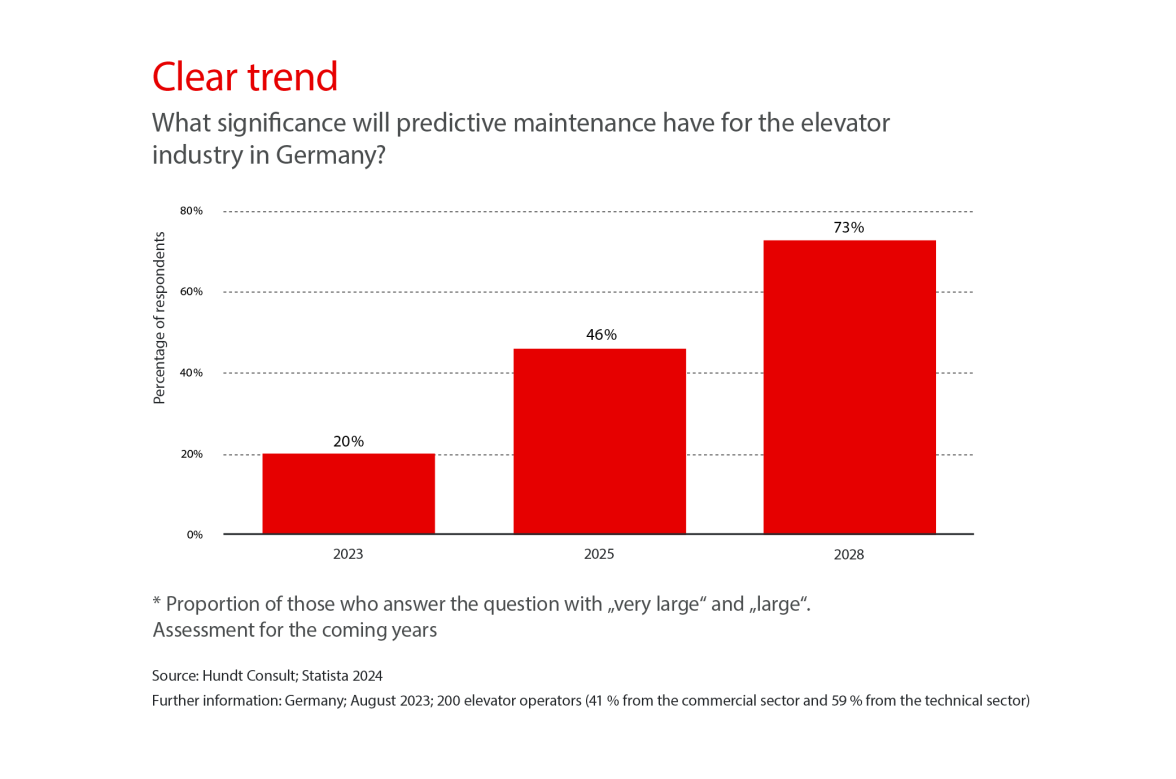

The Company
A global player with a long history
TK Elevator is one of the world's largest lift manufacturers and service providers. Originating from the long-established Essen-based industrial group thyssenkrupp, the company has existed as an independent brand since 2020 and is marketed worldwide as TKE. With a turnover of €8.5 billion and more than 50,000 employees, TK Elevator is responsible for the maintenance of 1.4 million stair and lift systems worldwide. This is made possible by a robust sales and service network of over 1,000 locations.
TK Elevator has developed the cloud-based IoT platform MAX to improve the quality of service, resolve breakdowns faster and significantly reduce the number of breakdowns. Machine data such as door movements, rides, starts, car calls and fault codes are recorded by the connected lifts and transmitted to the cloud. Intelligent algorithms analyse the operating data and calculate, for example, the remaining service life of individual components. Diagnostics provide service technicians and installers with critical information at an early stage. This enables them to carry out necessary repairs before problems cause a breakdown: predictive maintenance becomes a reality.
The Solution
Predictive maintenance through IoT
To implement this new service and maintenance system, TK Elevator found in Vodafone a partner that could provide a powerful and flexible IoT network for MAX worldwide. TK Elevator already had a partnership with Vodafone as a mobile customer for its employees and as a fixed line customer in Germany. .
TK Elevator's MAX-equipped lifts will work with Vodafone global SIM cards. These provide connectivity to the Microsoft Azure cloud, enabling the transfer of machine data recorded in the field. SIM card management, cost control and data access are handled by the Vodafone Global Data Service Platform (GDSP). It provides the necessary interfaces for TK Elevator staff to manage the IoT SIM cards used via their own administration interfaces.
A special feature of this project is the newly developed compatibility with the Microsoft Azure cloud. Vodafone supports this architecture by directly connecting its Global Data Service Platforms (GDSP) to Microsoft Azure via appropriate application programming interfaces (APIs).
Networked elevators reduce downtimes
The advantages
At a glance
To date, TK Elevator is already using over 130,000 global IoT SIM cards from Vodafone for this purpose. In the future, around one million elevators worldwide in Europe, Asia and North and South America will be equipped in this way. The system can reduce downtime by up to 50 percent. This increases operating times in a MAX-connected building and enables more consistent availability of full elevator capacities.
Powerful and flexible
IoT Platform
International availability
with global IoT SIM cards
Integration with the Microsoft Azure cloud platform
The Vodafone IoT Platform
50 per cent less downtime
thanks to MAX and the Vodafone IoT solution
5 questions for U.Jaksche und R.Stocker
5 questions for U.Jaksche and R.Stocker
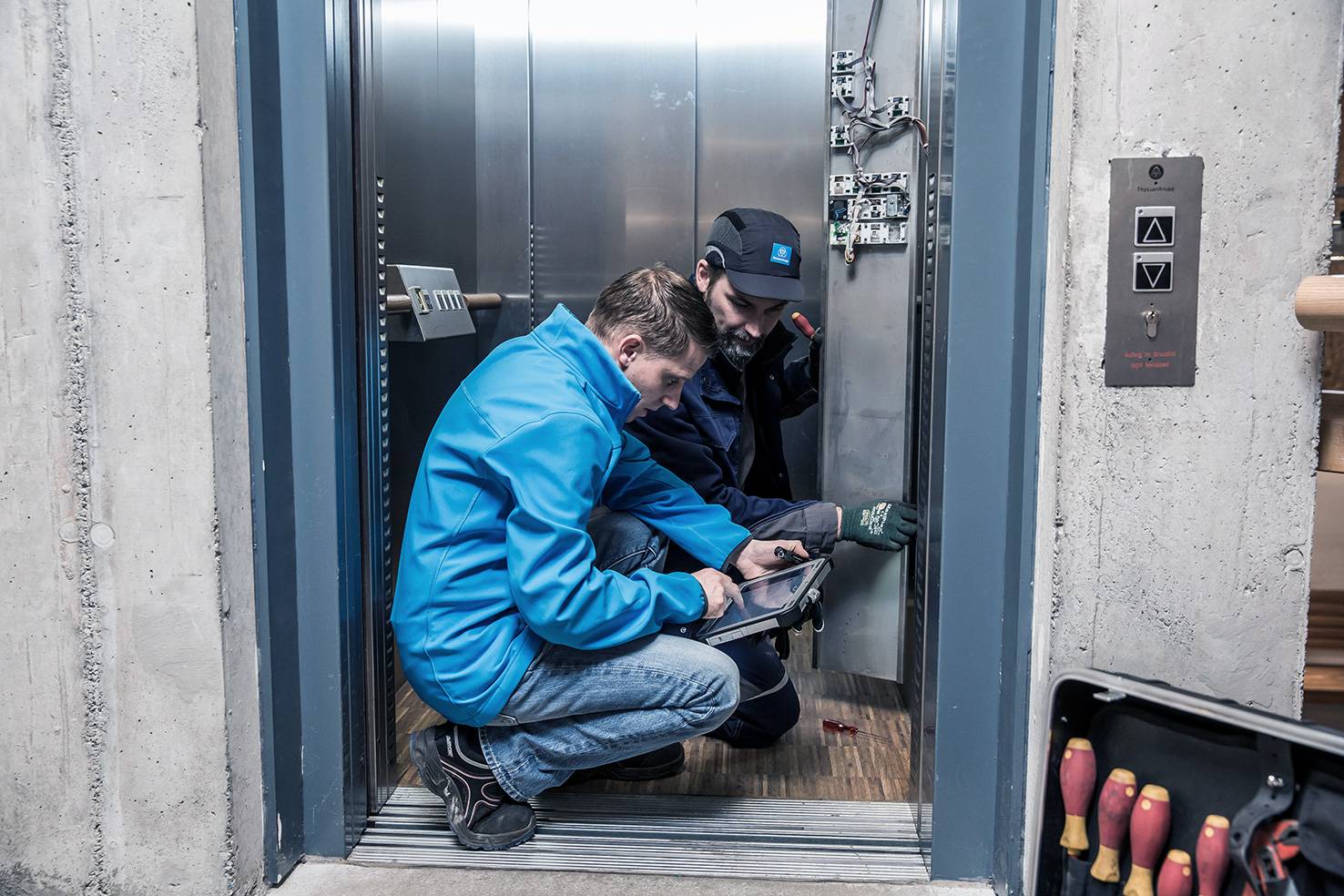
5 questions for Uwe Jaksche and Ralf Stocker
"The better the technology, the more invisible"
A conversation with lift fitters Uwe Jaksche and Ralf Stocker about digital change in the workplace, talking lifts and unusual liberation campaigns.
Stairs or lift?
Uwe Jaksche: Definitely the lift! When we're called out, the stairs become our natural enemy: thirteen floors on foot with full equipment - that's no fun.
Ralf Stocker: When we get into a big building, it's a great relief if there's a second lift that works (both laugh).
What characterises your work?
Uwe Jaksche: The variety. On the one hand, there's the human aspect: we travel a lot and easily come into contact with ten different customers every day. Then there's the technology: we're always at the cutting edge, which makes our job even more interesting.
Speaking of technology, your industry is changing more than it has in decades. How does that affect your work?
Uwe Jaksche: In the beginning everything was done on paper, sometimes we had to find a phone booth to talk to customers and the head office.
Ralf Stocker: When I started in 2001, everything was still done on paper: time sheets, maintenance sheets, fault sheets - all by hand. Then came the first computer with a printer. We used it to print out orders signed by our customers. Now we do everything on our tablet. It also has a Vodafone SIM which we use to access all the information in real time. I can have the customer sign order forms digitally and send them to them immediately by email. A huge improvement!
The system is capable of learning and becomes increasingly precise in its diagnoses based on the data.
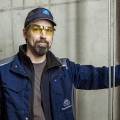
Ralf Stocker
Elevator fitter at TK Elevator
Ralf Stocker has been with thyssenkrupp Elevator since 2001. As a service technician, he has been able to experience technical change first hand in recent years.
Have you already been able to gain experience with IoT and the cloud in your day-to-day work?
Uwe Jaksche: For the last two and a half years, I've been the technical leader of TK Elevator’s MAX project, where these technologies play a key role. The keyword is "predictive maintenance": we are networking lifts and their components so that repairs can be carried out before the lift breaks down. This generates a huge amount of data that needs to be sorted and clustered - it completely changes the way we work.
Ralf Stocker: The MAX-Box, which we use to view all lift data via Wi-Fi, can do much more than just make an emergency call. The system is able to learn and become more and more accurate in its diagnosis based on the data.
How do your customers react to these new technologies?
Ralf Stocker: Surprised! When you call them out of the blue and tell them that the lift is stuck before they have noticed it themselves - that definitely causes astonishment.
Uwe Jaksche: Let me put it this way: the better the technology, the more invisible it becomes to the user. The lift is a classic example of this: customers only become aware of the technology behind it when it breaks down. With predictive maintenance, we are getting closer to the ideal of the lift never breaking down - which is obviously a great added value. With Smarthome we also offer our customers an interface through which they can call up all the information about their lift.
It is only when the lift breaks down that the customer realises the technology behind it.
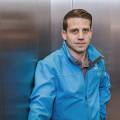
Uwe Jaksche
Technical Project Manager at TK Elevator
Uwe Jaksche has been a technician at thyssenkrupp Elevator for 20 years. He started as a service technician and is now a technical project manager for MAX.
You often work under time pressure and are responsible for people. How do you stay focused?
Ralf Stocker: It's not always easy. When we arrive on site, things are often very tense. I've been doing this for 18 years now - I can understand that. On the other hand, you have to learn to let it go.
Uwe Jaksche: I see it like this: we're not emergency doctors fighting for lives. We repair lifts. And in an emergency, there's always the stairs - they can't fail.
Have you ever been stuck yourself?
Ralf Stocker: (laughs)
Uwe Jaksche: Yes, not just once! We don't talk about it (laughs). No, seriously: I've been stuck in various situations: in the car, on the car, even in the pit with the lift above me. These are exciting impressions.
Were they able to free themselves?
Uwe Jaksche: That is actually very rare, even with our knowledge and the right tools. Without outside help, it's almost impossible.
So the Hollywood-style exit through the ceiling is just a lift myth?
Ralf Stocker: It really is a film cliché. It's only possible in firefighting lifts and only with special tools.
Uwe Jaksche: I would actually advise against it: Lifts have become even safer in recent years, and if someone does get stuck, the car is the safest place to be.
Can you still understand why some people prefer to walk to the 12th floor rather than take the lift?
Ralf Stocker: Of course. There are many reasons, such as claustrophobia. Objectively speaking, however, lifts are by far the safest means of transport - just look at the number of daily lift journeys worldwide compared with the number of accidents: Statistically, the numbers are minimal.
Mr. Stocker, Mr. Jaksche, thank you very much for this conversation!
Lift technology and urbanisationg
The vertical city
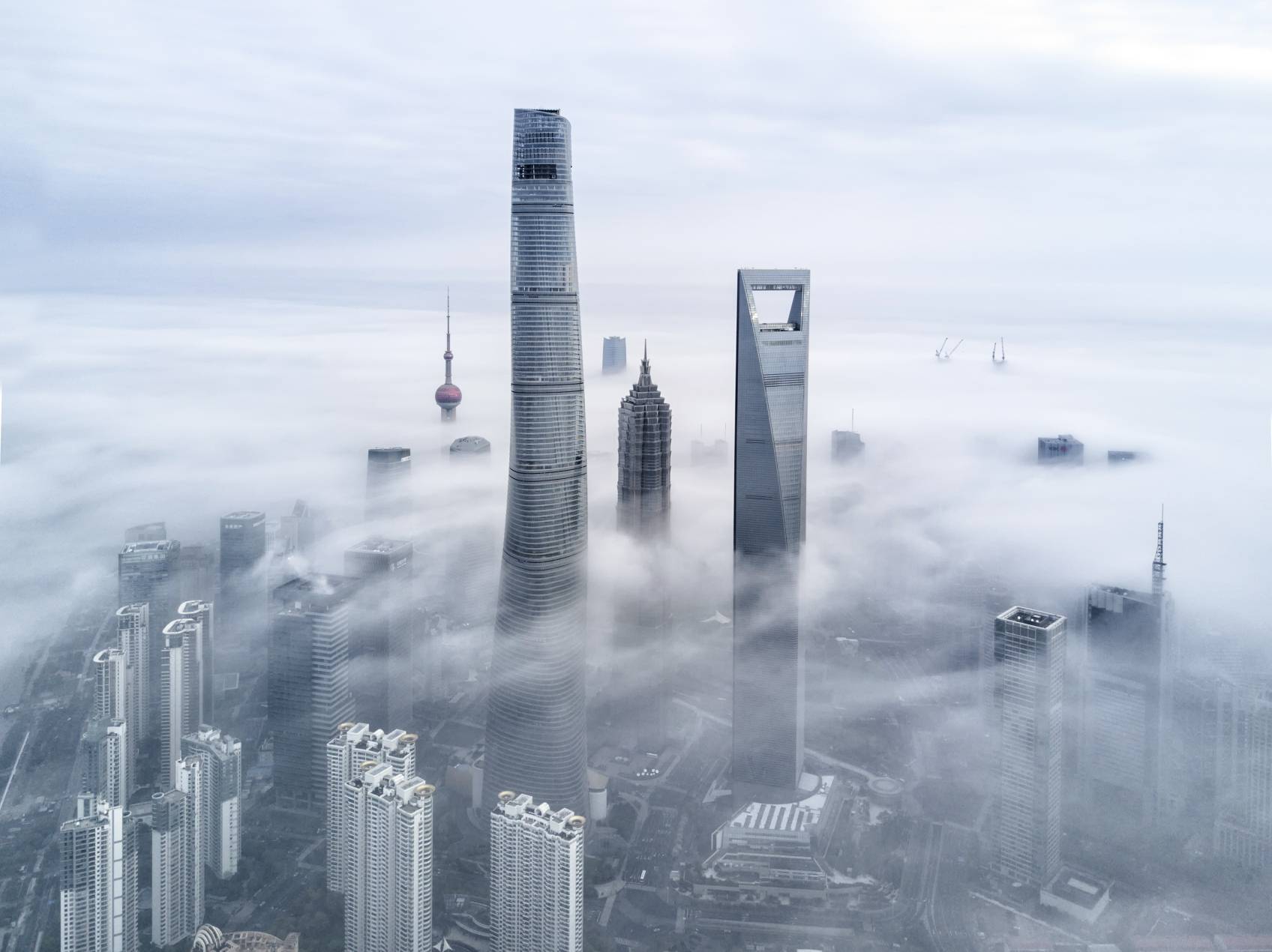
The vertical city
Lift technology and urbanisation
The revolution had reached the fifth floor. When the world's first commercial passenger lift took visitors to the top of New York's Haughwout Building in 1857, it took several minutes. Powered by a steam engine, the lift travelled at 20 centimetres per second. At least there was a sofa.
Some 160 years later, in Shanghai, China, the world's fastest lift takes tourists from the ground floor to the viewing platform at a height of 552 metres in 53 seconds. And in the Burj Khalifa, currently the world's tallest building at 828 metres, guests can watch the sun set over Dubai twice thanks to the lift: First on the ground floor and then again on the 124th floor terrace - from zero to 454 metres in 60 seconds.
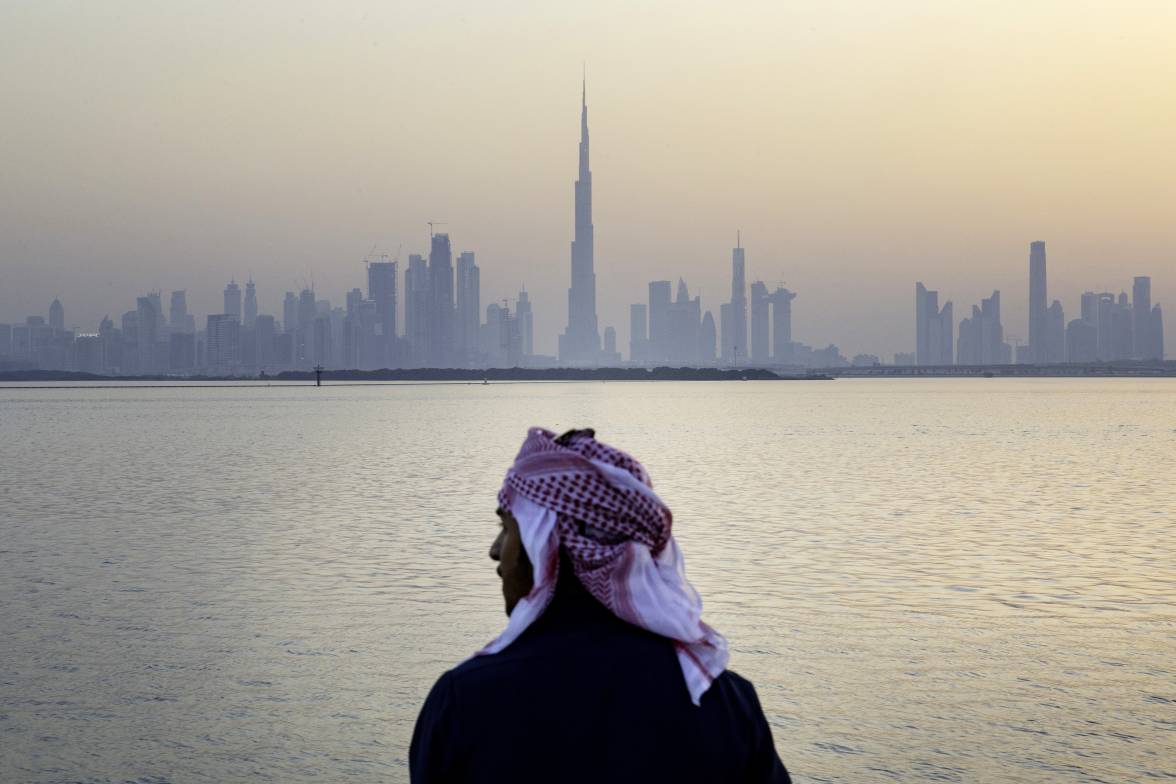

From the world's first commercial passenger elevator in New York's Haughwout Building to the record-breaking Burj Khalifa in Dubai, elevators have played a key role in shaping modern cities.
Arteries of the modern city
Higher, faster, further is not an end in itself, but a necessity: lifts are the arteries of the modern city. They keep the flow of people moving and shape urban space. "The lift, underestimated and overlooked, is to the city what paper is to reading and gunpowder is to war," says Nick Paumgarten, author of The New Yorker.
Without the lift, there would be no verticality, no density, and without these, none of the urban benefits of energy efficiency, economic productivity and urban culture. "The Earth's population would seep across its surface like an oil spill, and we'd spend even more time in traffic or on trains, traversing a giant concrete carapace," says Paumgarten.
A theory supported by Patrick Carr, director of the New York Elevator Historical Society: "Without skyscrapers, London would stretch almost as far as Manchester. The city limits of New York could touch those of Ohio," he said in an interview with the British newspaper The Guardian.
On the hunt for records
The long wait
By the end of the century, 70% of the world's population will live in cities. Space constraints in already overcrowded metropolises mean there is nowhere to go but up. The number of buildings over 200 metres tall has tripled since 2000. Architects are pushing the records ever higher. In Saudi Arabia, the Kingdom Tower, the world's first skyscraper to break the one-kilometre barrier, is currently under construction.
As cities and buildings grow, planners and architects face the challenge of getting more people to their destinations quickly and comfortably. A Herculean task, because lifts are a waste of time. In New York alone, all office workers together wait a total of 16.6 years a year for lifts and spend 5.9 years in them.
At the same time, the number of buildings that fulfil different needs is increasing: living, working, leisure, services, shopping - all under one roof. "Buildings are becoming more like vertical cities that require flexible transport systems; speed is not enough to meet the challenges of tall buildings," says Michael Cesarz, CEO of MULTI at TK Elevator.
Traditional lift systems and their static rhythm of one car per shaft, boarding, ascending, descending - they seem like relics of the past in this demanding urban landscape. The heavy steel cables that hold and move traditional lift cabins break under their own weight at lengths of over 600 metres. If you want to get to the top of the Burj Khalifa, you have to change lifts.
Buildings are becoming more like vertical cities, requiring flexible transport systems.
Michael Cesarz, CEO MULTI at TK Elevator
Circulating cabins
The lift industry has long been searching for the holy grail: a ropeless lift that travels horizontally as well as vertically. TK Elevator has found it with the MULTI lift system. Height restrictions are now a thing of the past.
Like a vertical metro system, the cabins circulate independently within the building. This means they can carry up to 50 per cent more passengers - and waiting times are reduced. The shafts are 25 per cent smaller than those of conventional lifts, freeing up space for apartments and offices.
Put simply, the cabs are powered by magnetic technology, just like the Transrapid in Shanghai and the subways in Osaka and Tokyo. In the MULTI, the magnetic coils sit in two rails on the wall of the lift shaft. The counterpart is at the back of the cab.
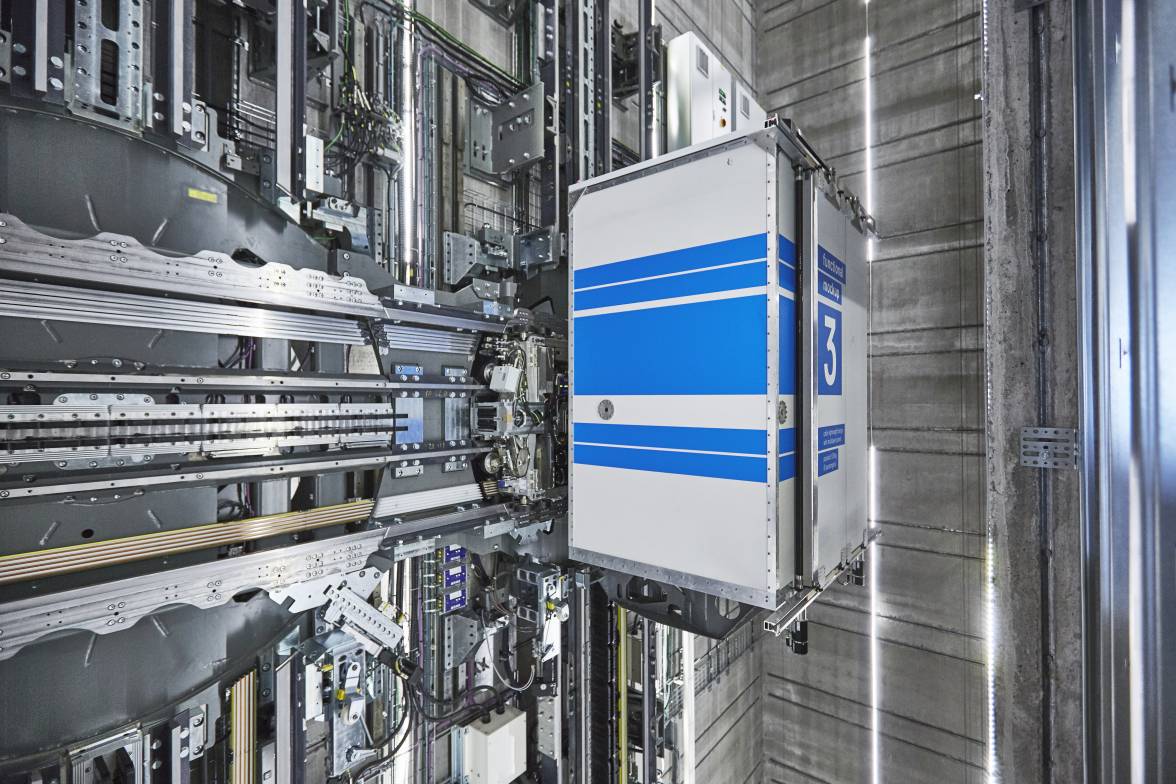

Redefines urban mobility: Thanks to magnetic technology, the MULTI lift system can move not only vertically but also horizontally.
Predictability of travel
Lifts such as the MULTI can connect different parts of buildings and adjacent skyscrapers. They can move crowds through urban hubs such as large train stations, metro stations, shopping centres and airports. In the long term, the system will become part of the Internet of Things, collecting data on components and users to predict stops - all without the need for buttons. "The MULTI will change the way people move, work and live in cities. There will be no limits to the design of buildings," says Cesarz.
Michael Cesarz is not alone. MULTI is one of TIME magazine's 25 best innovations of 2017, won the German Design Award 2018 and is a finalist in the Tall Innovation Award 2018. The first test drive of the MULTI took place in June 2017 in TK Elevator's new 246-metre test tower in Rottweil, Germany. The first commercial MULTI is expected to open its doors to passengers by 2022 at the latest. Will it offer seating like the Haughwout Building in New York in 1857?

